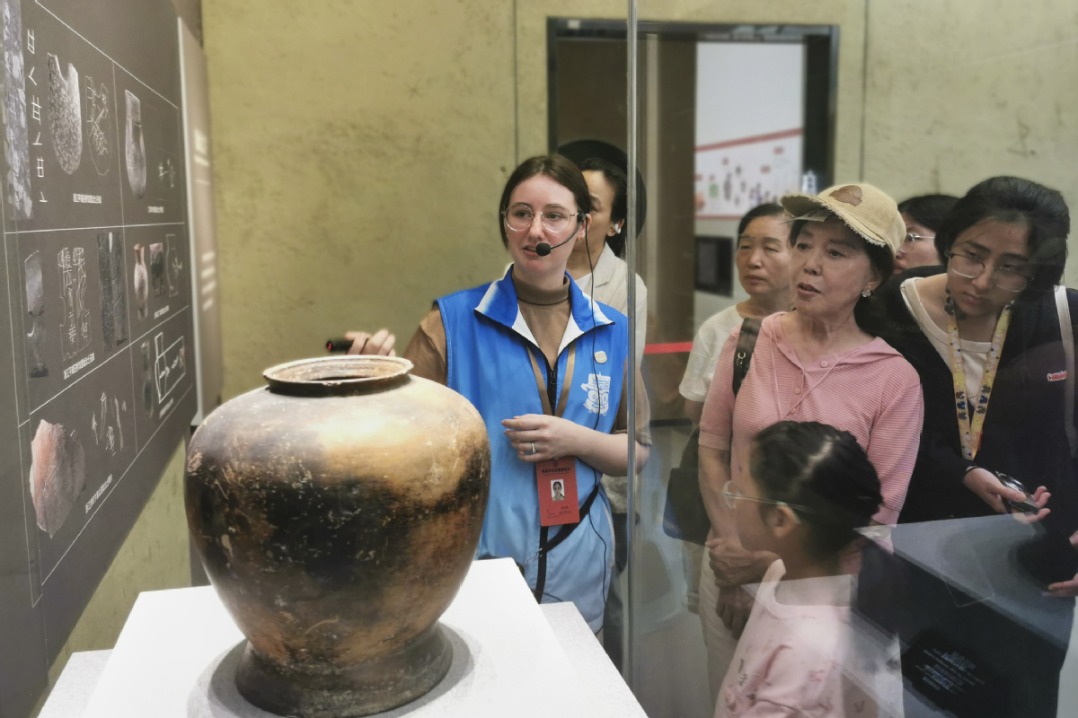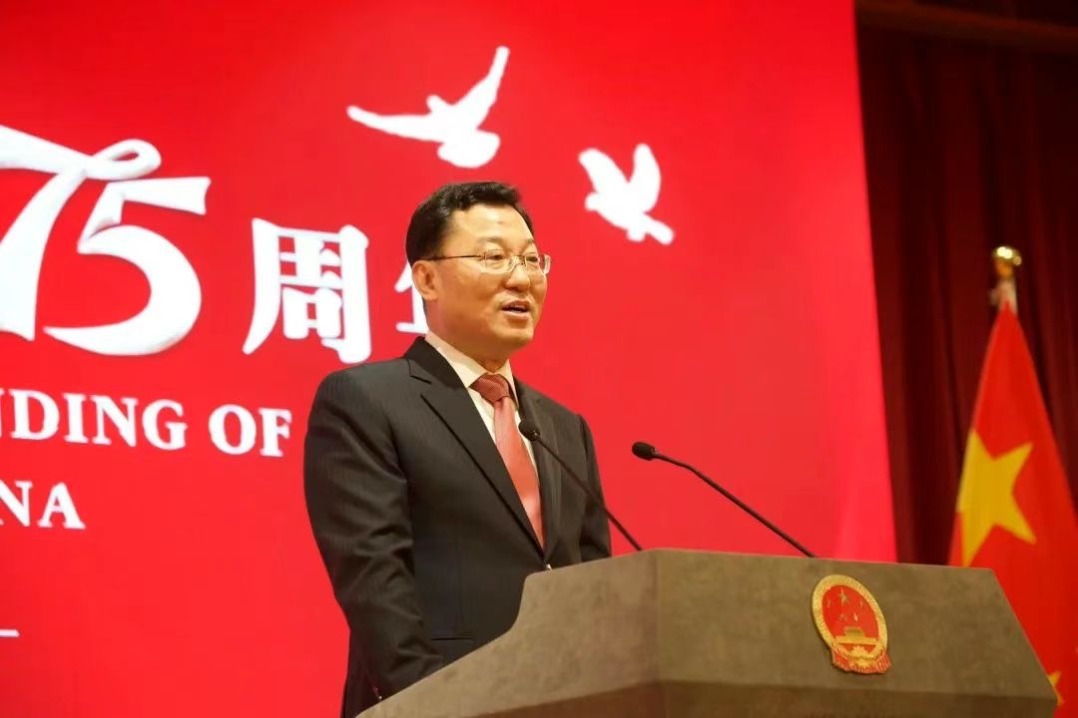Unearthed flush toilet dates back 2,400 years
By CHEN MEILING | chinadaily.com.cn | Updated: 2023-02-16 00:13

Archaeology: Toilet proof of sanitation awareness
A manual flush toilet, dating back 2,400 years, has piqued the interest of archaeologists who are trying to find out what people ate during that time by analyzing soil samples collected from it.
Broken parts of the toilet, including a bent pipe, were unearthed from the Yueyang archaeological site in Xi'an, Shaanxi province, last summer and pieced together for months before researchers released details on Wednesday.
Discovered amid the ruins of a palace in the ancient Yueyang city, the toilet is believed to have been used by Qin Xiaogong (381-338 BC) or his father Qin Xian'gong (424-362 BC) of the Qin Kingdom during the Warring States Period (475-221 BC), or by Liu Bang, the first emperor of the Han Dynasty (206 BC-AD 220). The palace was possibly used for administrative affairs.
A "luxury object" such as a flush toilet would only be used by very high-ranking members of the society during that time, according to Liu Rui, a researcher at the Institute of Archaeology at the Chinese Academy of Social Sciences, who was part of the excavation team at Yueyang.
"It is the first and only flush toilet to be ever unearthed in China. Everybody at the site was surprised, and then we all burst into laughter," he said.
The toilet bowl was placed indoors, with the pipe leading to an outdoor pit, he said, adding that servants probably poured water into the toilet every time it was used.
Liu said the upper half of the flush toilet was not found during the excavation and hence, experts cannot confirm whether its users sat on it or squatted over it.
However, based on previous records about toilets, such as stone carvings on the tombs of royal members during the Western Han Dynasty (206 BC-AD 24), they likely squatted over it.
"The flush toilet is concrete proof of the importance the ancient Chinese attached to sanitation," Liu said, adding that there were few records of indoor toilets in ancient times.
Before this toilet was unearthed, the first manual flush toilet was believed to have been invented by John Harington for Queen Elizabeth I in the 16th century.
Yueyang was the capital of the Qin Kingdom for about 35 years and also the first capital city of the Han Dynasty, during which palaces were demolished to make way for farmlands.
Since 2012, archaeologists have been conducting large-scale excavations in Yueyang, which is today part of Xi'an's Yanliang district.
The toilet was found at the No 3 site.
"Besides all written records, we can learn more about social reforms and systems of the kingdom by digging deeper into ancient palaces," Liu said.
The partially restored toilet is now a key to further archaeological research on Yueyang.
Experts are analyzing the soil inside, hoping to find traces of human feces and learn about the eating habits of ancient people. So far, the soil samples have only yielded traces of fertilizers used by farmers during Han Dynasty.
























